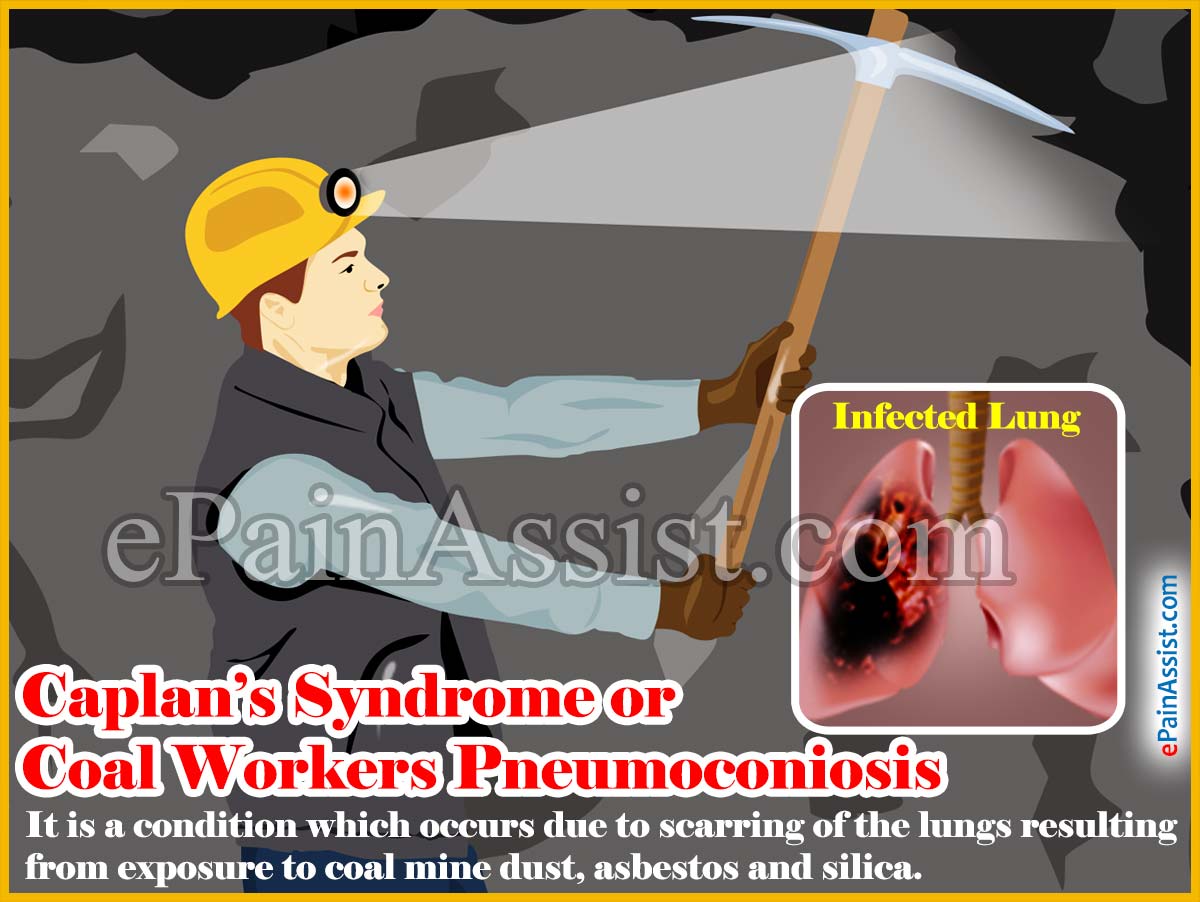Caplan’s syndrome is also known as silicoarthritis, rheumatoid lung silicosis and rheumatoid pneumoconiosis.
Caplan’s syndrome is a condition which occurs due to scarring of the lungs resulting from exposure to coal mine dust, asbestos and silica. It more commonly affects patients suffering with rheumatoid arthritis who inhale such particles while performing their work routine. Caplan’s syndrome leads to the development of nodules in the lungs which usually restricts the breathing process. This lung disease is also known as coal workers pneumoconiosis. Exposure to asbestos materials like floor tiles, wallboard, and insulation may also lead to lung cancer as a result of inhaling exposed fibers present in the air. There is no treatment available for treating Caplan’s syndrome.

Silica is present in sand and rock formed in high quantities in quartz. Breathing silica dust is one of the causes for developing it. The amount of dust inhaled and length of exposure is directly related to the severity of the illness. Caplan’s syndrome under this condition usually develops in individuals working in mining, sandblasting operations and gravel and sand industry.
Caplan’s syndrome may also cause numerous growths in the lungs in case of severe scarring. People suffering with it are also very prone to tuberculosis. It generally causes breathing limitations, but it also affects the patient’s functional ability in some rare cases. Taking precautions like not working in dust-producing environments and avoiding smoking really helps in Caplan’s syndrome. Smoking usually increases symptoms of Caplan’s syndrome.
Epidemiology of Caplan’s Syndrome or Coal Workers Pneumoconiosis
- Caplan’s syndrome is quite a rare condition. Caplan’s syndrome affects 1 in 100,000 individuals due to declining coal mine industry.
- Increasing safety at work place and improving regulations for coal mine workers and other people working in related occupations where dust is present has brought down the number of Caplan’s syndrome cases significantly. It is rare now due to the improved rules and regulations imposed by government health organizations though some countries are still present where mining operations are carried out without proper safety measures.
Causes of Caplan’s Syndrome or Coal Workers Pneumoconiosis
- Caplan’s syndrome is caused by inhaling the dust resulting from coal mining. This leads to inflammation and formation of several small lung nodules leading to airway diseases.
- Individuals when exposed to dust develop severe lung scarring which creates difficulty for the lungs to carry oxygen to the bloodstream i.e. progressive massive fibrosis.
Signs and Symptoms of Caplan’s Syndrome or Coal Workers Pneumoconiosis
- Nodules of the skin.
- Shortness of breath.
- Cough.
- Wheezing.
- Joint swelling and pain.
Treatment of Caplan’s Syndrome or Coal Workers Pneumoconiosis
No particular cure is available for the treatment of Caplan’s syndrome. Though associated lung and joint problems can be treated, prevention is the only form of treatment that can be suggested for Caplan’s syndrome. Taking precautions like not working in dust-producing environments and avoiding smoking may help in dealing with it, especially avoidance of smoking that usually increases the symptoms of Caplan’s syndrome.
Investigations of Caplan’s Syndrome or Coal Workers Pneumoconiosis
A complete subjective and physical examination is necessary to diagnose Caplan’s syndrome. Generally, diagnosis of Caplan’s syndrome is done through a question-answer session like detailed medical history related to possible exposure to mining dust. Physical exam is carried out with special attention to the joint and skin disease.
Other Tests May Include
- Joint x-rays.
- Chest x-ray.
- CT scan of the chest.
- Rheumatoid factor test.
- Pulmonary function tests.
